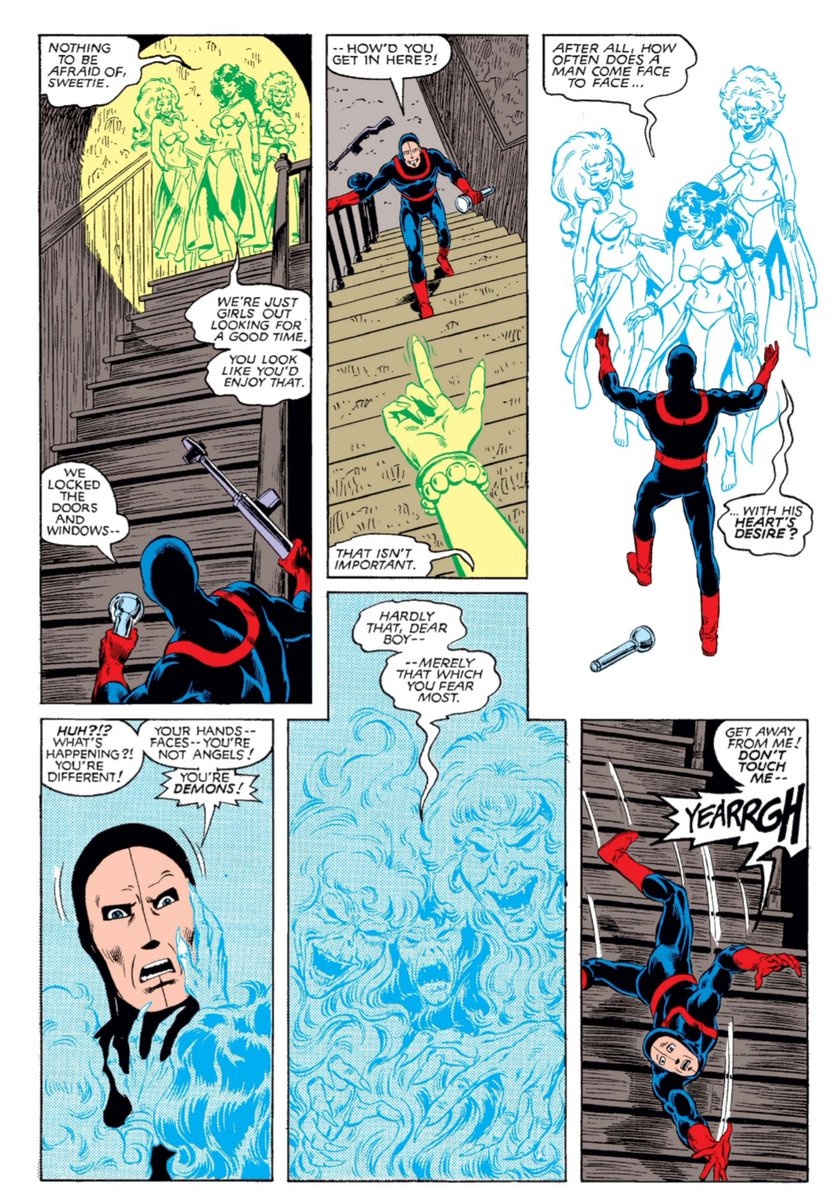
Rather than simply framing “The New Mutants” entirely from the students’ perspective, Claremont places a great deal of emphasis on the challenges faced by their educators, tasked with nurturing the young mutants through their individual challenges. #xmen #newmutants 1/10 

The stories invest the reader in the pedagogical hurdles that the team presents by providing a great deal of internal narration from Professor X and later Magneto as they contemplates how to reach the students – how to help them overcome their individual challenges. 2/10 

Rahne is sheltered and traumatized. Karma is traumatized and disinterested in superheroics. Magma is sheltered and entitled. Illyana is traumatized and obscenely powerful. Roberto is headstrong and prone to posturing in order to mask his insecurities (and also traumatized). 3/10 

Dani comes to the school a bit headstrong, but already quite capable as both a leader of the team and as the protagonist of the series. X has to build trust with her and mentor her in the use of her telepathic powers, but she immediately takes on a leadership role. 4/10 

Sam is complicated. He has a (charmingly) good heart, but he is socially dense, shy, struggles academically, a bit of a show-off with a poor understanding of his own limitations, and, in general, he can sometimes be easily manipulated – in essence, he’s naïve. 5/10 

Collectively, the entire team is insubordinate (even rebellious), overconfident, and undisciplined. The entire series leans even further into this concept once Magneto becomes headmaster and struggles to keep control. 6/10 

This also becomes one of the great underlying tragedies in the series: Magneto succeeds (mostly) in his internal moral conflict; he adopts the gentler way quite successfully. Where he fails is as an educator and caregiver. 7/10 

We can also extend this heroic-educator narrative to a few side characters such as Stevie and Moira, both of whom likewise struggle with their responsibilities toward the development of the young mutants. The thread is even picked up by Cable late in the series. 8/10 

Finally, we should note that the heroic quest of the educators comes to the surface quite directly with the established contrast to the Hellions and Emma Frost’s more villainous education methods – a perfect foil to Xavier’s approach. 9/10 

Through this pedgagogical theme, New Mutants adds a secondary internal melodrama surrounding those entrusted with their education and upbringing. It’s an especially fun dynamic to revisit when re-reading the series as an adult. 10/10 

• • •
Missing some Tweet in this thread? You can try to
force a refresh





















